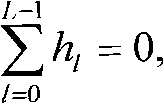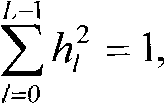Intelligent centrifugal pump cavitation fault detector
A technology of centrifugal pumps and detectors, which is applied in the field of testing, can solve problems such as losses, and achieve the effects of reasonable structure, low cost, and reliable performance
- Summary
- Abstract
- Description
- Claims
- Application Information
AI Technical Summary
Problems solved by technology
Method used
Image
Examples
Embodiment Construction
[0009] The intelligent centrifugal pump cavitation detector of the present invention will be described in detail below using the accompanying drawings and embodiments
[0010] refer to figure 1 , the intelligent centrifugal pump cavitation detector of the present invention includes a signal acquisition system 2 composed of a pressure transmitter arranged at the inlet of the centrifugal pump 1 and connected to a signal processing system 3, and the signal processing system 3 is connected to a detection system 4 , the detection system 4 is connected with the display control system 5 . Accurately collecting the pressure pulsation signal at the inlet of the centrifugal pump 1 by the signal acquisition system 2 is a key link in fault diagnosis. In order to obtain an accurate pressure pulsation waveform and reduce the detection error caused by waveform distortion, the pressure tap at the inlet of the centrifugal pump 1 must be small enough; and since the low-frequency pulsation only...
PUM
 Login to View More
Login to View More Abstract
Description
Claims
Application Information
 Login to View More
Login to View More - R&D
- Intellectual Property
- Life Sciences
- Materials
- Tech Scout
- Unparalleled Data Quality
- Higher Quality Content
- 60% Fewer Hallucinations
Browse by: Latest US Patents, China's latest patents, Technical Efficacy Thesaurus, Application Domain, Technology Topic, Popular Technical Reports.
© 2025 PatSnap. All rights reserved.Legal|Privacy policy|Modern Slavery Act Transparency Statement|Sitemap|About US| Contact US: help@patsnap.com



